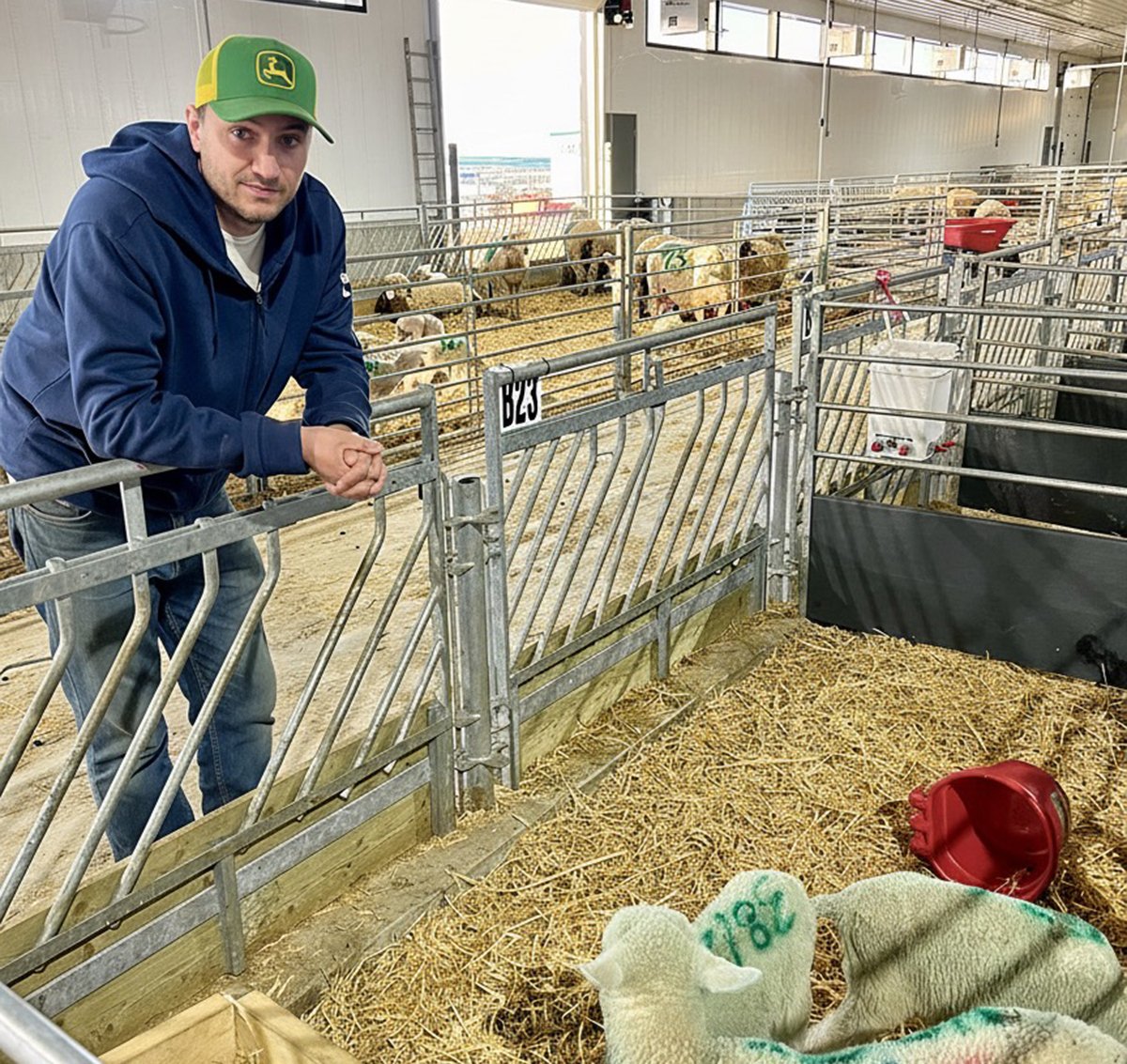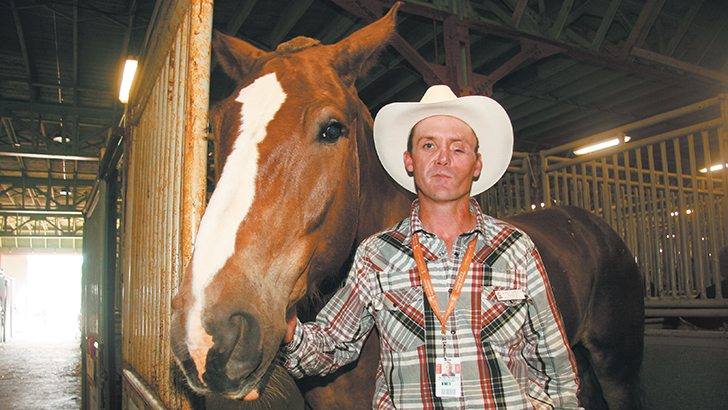It is a 12-hour trip from Fort McMurray, Alta., to the Calgary Stampede, but Rocky Dempsey’s life journey has been much longer.
Originally from a New Brunswick fishing and farming community, he came to Alberta looking for work 10 years ago.
“I was chasing the dollar,” he said.
He works for Syncrude as a millwright at Fort McMurray. It means 10 to 12 hour days on the night shift but when he punches out, he returns to his farm to tend his horses.
“It is my wind-down time. The sun is coming up and the birds are chirping,” he said during a break in the horse barns while attending the heavy horse pulls at the Stampede held July 8-18.
Read Also

Solar, sheep provide valuable farm diversification
Eric Steeves says raising sheep on forages grown under solar panels provided economic stability and perhaps even saved his family’s fifth generation southern Alberta grain farm.
Dempsey got his first Belgian when he was 14 and a friend introduced him to heavy horse pulling.
“If we weren’t competing, we would go to watch horse pulls,” he said.
It opened a new world to him where competitors became close friends who all shared a passion for horses.
The sport involves a team of heavy horses, a teamster and two helpers working together as two animals pull successively heavier weights on a sled. The sled must travel 14 feet.
The horses require special shoes with cleats in the front to give them extra torque. A certified farrier, Dempsey makes his own horseshoes that weigh about eight to 10 pounds each.
In addition to training horses for pulling competitions, he also uses them for farm work to keep them busy.
“A lot of them are bred so well and they are so smart, they want to be doing something,” he said.
A good pulling horse is hard to find even with selective breeding.
“Only one in 40 makes a pulling horse,” he said.
When he decided to seek his fortune out West, he brought a favourite Belgian with him.
This year, he narrowly missed being caught up in a tragedy when the city of Fort McMurray and 1.2 million acres of forest burned for weeks.
He had just come off work and knew a fire was burning but thought he would be safe. The wind shifted and he and 80,000 others were put on mandatory evacuation.
Many could not get their horses out, although he was able to move his to a friend’s place. He also erected plywood panels on his truck and loaded up two miniature donkeys and a pony to haul to safety.
Some friends’ horses left behind suffered burns on their legs. The army was able to round up many and veterinarians were able to attend to them. None died.
Dempsey expected to be out of his home for two or three days but ended up staying away for a month. When he returned June 2, he saw fire had come within 20 feet of his barn.
He lost some hay and a bobsled used for sleigh rides. The power did not go out so his house was safe and he did not have to contend with a refrigerator full of rotten food.
Very little hay is grown in the area because the land is muskeg. Large sections of pastureland burned so feed will be a problem. However, the Alberta Equestrian Federation has been helping find hay donations.
He is confident he will get through the year with enough feed and is already planning next year’s visit to the Stampede.
















